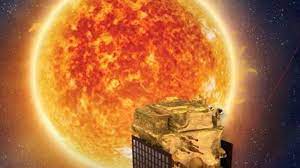India’s pioneering solar mission, Aditya-L1, which is dedicated to studying the Sun, has initiated data collection using one of its seven onboard instruments. This remarkable milestone occurred just a day before the spacecraft is set to depart from Earth’s orbit, as confirmed by the Indian Space Research Organisation (ISRO).
The Supra Thermal and Energetic Particle Spectrometer (STEPS) sub-system, a crucial component of the Aditya Solar Wind Particle Experiment (ASPEX) payload, is now actively measuring fast-moving charged particles originating from solar processes within the Sun.
“This data will be instrumental in helping scientists analyze the behavior of particles in the vicinity of Earth,” stated ISRO in a recent announcement.


Aditya-L1’s Remarkable Journey
Aditya-L1 embarked on its journey on September 2, propelled into space by a polar satellite launch vehicle (PSLV-C57) from Sriharikota. This launch followed closely on the heels of the successful soft landing of Chandrayaan-3’s Vikram Lander on the Moon’s south polar region.
Currently, Aditya-L1 is in a heavily elliptical orbit, with its closest point to Earth at 256 km and the farthest at 121,973 km. Early on Tuesday morning, the spacecraft is slated to depart from Earth’s orbit and proceed towards the L1 (Lagrange 1) point within the Earth-Sun system. This designated location will serve as the vantage point from which Aditya-L1 will conduct its solar observations.
Continuous Data Collection on the Horizon
The activation of the STEPS sensors occurred on September 10, when the spacecraft’s orbit extended beyond 50,000 km from Earth, as confirmed by ISRO. After conducting necessary health checks on the instrument, ground stations have commenced data collection. Importantly, data gathering by this specific sub-system will persist throughout Aditya’s voyage to the designated L1 point and will continue beyond that phase.
Unlocking Solar Mysteries
The data collected during Aditya-L1’s observations from the L1 point is expected to provide invaluable insights into the origin, acceleration, and direction-specific properties (anisotropy) of solar wind and space weather phenomena. ISRO’s solar mission holds immense promise for expanding our understanding of the Sun and its influence on space weather, benefiting both scientific research and practical applications.
As Aditya-L1 prepares to delve deeper into the mysteries of our star, this mission stands as a testament to India’s growing prowess in space exploration.